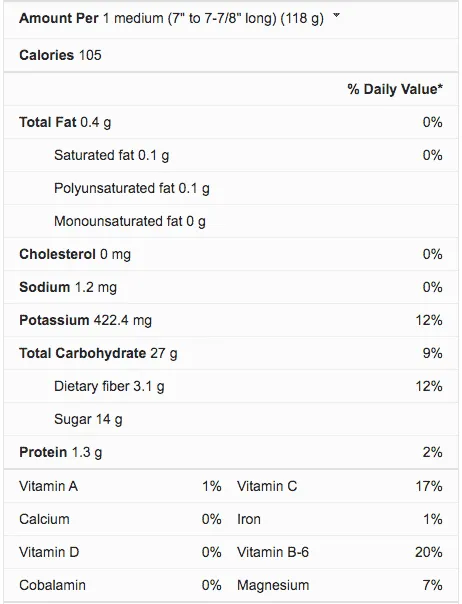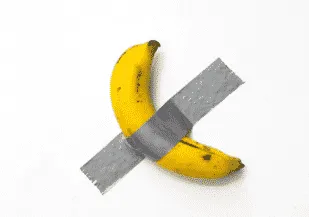This is a hilarious and informative post about bananas.
This post is inspired by a Redditor. He left a comment on a now-removed post of mine (because I didn’t learn my lesson on self-promotion) who suggested (partially sarcastically) that I might be able to get more traffic writing something about pets or bananas. While I don’t know much about pets (unless you count stuffed animals that I have growing up), I pay homage to my ancestors and I eat plenty of bananas. So I figure that I, WANANA, should write a post about BANANAS. Also, given that I write a lot about money (including the good old “how to make money online“), it is even more fitting for me to write about bananas. After all, bananas are the humble fruit that are almost always the least expensive in the grocery store. So, let’s begin!
Why are bananas so cheap compared to other fruit?
Nowadays, bananas are oftentimes the only fruit that cost less than $1 per pound in the grocery stores. How is that possible? Here are a few main reasons:
The genetic makeup of bananas
Most of the bananas we eat today belong to a variety called Cavendish. As a matter of fact, Cavendish accounts for 99 percent of the banana export market. What’s special about Cavendish is that it produces asexually. This means that each banana is basically a clone of its ancestor. What’s so great about asexual reproduction? The secret lies in standardization. Because of Cavendish bananas’ lack of variation, people learned to grow and scale up production quickly.
On the flip side, without genetic variation, bananas become vulnerable to any virus that is able to attack its weaknesses. A famous example was the outbreak of the Panama disease in the 1950s. It almost wiped out the entire commercial production for Gros Michel bananas.
Inexpensive production and transportation system
Humans have invested a lot of time and money into improving the efficiency of the production and transportation systems of bananas. The result is a great network of railroads and ships that drastically reduce the cost of transporting the fruit. The low wages of human labour also (sadly) contribute to the low cost that we, as consumers, get to enjoy today.
Retailer strategies
The pricing strategies of retailers also play a main role in keeping bananas’ prices low. Many retailers adopt a “banana strategy” and uses it as a loss leader to attract consumers. The competition among retailers also prevents banana prices from rising too much. After all, it is difficult for retailers to raise the price when the public expects bananas to be the cheapest fruit. The magical power of less than $1 per pound also contributes to retailers’ reluctance to cross that price point.
Types of bananas
Although the bananas we eat the most today belong to the Cavendish subgroup, there are still other varieties available. Bananas cultivars are divided into two sections (Musa and Callimusa). Musa section is further divided into 10 Groups, each containing multiple cultivars of bananas. Cavendish bananas, for example, belong to the AAA Group within the Musa section.
Here are some popular varieties of bananas other than Cavendish:
- Pisang Raja
- Red Banana
- Lady Finger
- Gros Michel
- Blue Java
- Plantain
- Manzano
- Burro
- Barangan
- Goldfinger
Are you interested in learning more about the different types of bananas? I recommend that you check out either this article by Edible Arrangements, or this article on Balcony Garden Web. It could actually be a fun challenge to see how many types of bananas you can find!
The nutritional values of bananas
Here is the nutrition scorecard for a medium banana, adapted from the USDA database:

According to Medical News Today, bananas are rich in potassium. Potassium helps manage blood pressure and reduce strain on the cardiovascular system. It may also reduce the risk of kidney stones as people age. The dietary fibre helps promote regularity and encourage digestive health. Vitamin B-6, on the other hand, helps reduce cardiovascular disease risk by lowering homocysteine level.
I have heard of people who don’t eat bananas because of its high sugar content. However, as long as you eat them in moderation, bananas should still be a part of your healthy diet. Plus, bananas are really delicious, and really help with your wallet!
How you can enjoy your bananas
Who says bananas are boring! A quick search of “banana recipes” on Google yielded 726 million search results. That’s a lot of bananas! I won’t go into the details of the recipes (I mean, there are literally hundreds of ways you can bake a loaf of banana bread), but here are some general categories of the ways you can enjoy your bananas:
- Eat them raw (obviously)
- Banana chips
- Fried bananas (with a scoop of ice cream on top!)
- Banana smoothies
- Boil your green bananas and eat them as your main source of carbohydrate for your meals (to replace potatoes, rice, pasta, etc)
- Banana ice cream
- Banana pancakes
- Bake with your banana! You can make banana bread, banana brownie squares, banana bites, banana cookies, and so much more!
See how versatile bananas are? I recommend that you always keep a few at home; they open doors to so many recipes and fun activities you can do at home!
Bananas in pop culture
Comedian – a banana duct taped to a wall
Speaking of bananas in pop culture, we must talk about that banana duct taped to a wall at a Florida art exhibit. The artwork, named “Comedian”, was created by artist Maurizio Cattelan. It was displayed at Art Basel, a renowned art show in Florida, in December 2019.

According to New York Times, at least three buyers purchased the pieces, each paying between $120,000 and $150,000. This clearly illustrates the point that trading up is the trend. Buyers received a limited-edition piece that includes one banana, a certificate of authenticity and instructions on how to replace the fruit. Of course, that was before a performing artist, David Datuna, peeled the banana from the wall and ate it.
That banana must have been the most expensive one to date. I wonder what the banana was thinking when it was taped to the wall.
Bananas in songs
Other than appearing in an art exhibit, bananas also make (reasonably) frequent appearances in songs and lyrics. One of my favourite songs, as a matter of fact, is Banana Pancakes by John Jackson. It has received over 31 million views on YouTube since 2008. It is definitely worth a listen if you haven’t done so!
Other than “Banana Pancakes”, here are some other songs that have “banana(s)” in the title. It may be another fun challenge for you and your friends to do a banana song marathon!
- 30,000 Lbs. of Bananas by Harry Chapin
- Banana Boat (Day-O) by Harry Belafonte
- Bananas and Blow by Ween
- Banana Boat by Jane Birkin
- Toast and Bananas by Blink-182
- Banana Co. by Radiohead
- Green Bananas by Jake Owen
- Banana Mango by Joe Satriani
- Banana Boat Limbo Song by Chubby Checker
- Banana Wind by Jimmy Buffett
My favourite song about bananas? Well, it has to be the one that’s all about bananas!
Bananas in TV shows
We can’t miss bananas in TV series, either. Bananas in Pyjamas is a popular Children’s TV series started in 1992. Cucumber, Banana and Tofu are some of the more recent (2015) LGBT dramas by Russell T Davies. There is also the Banana Splits in the 1970s, that tells the story of an ersatz rock band made up of a dog (Fleegle), a lion (Drooper), a gorilla (Bingo), and a baby elephant (Snorky).
Miscellaneous interesting facts about bananas
Here are some miscellaneous facts about bananas that I have come across while researching:
- Bananas are technically berries (but raspberries are not!)
- “Going bananas”, an idiom that means going crazy, may have been evolved from the idiom “going ape”. The close association of apes and monkeys with bananas in the Western imagination probably gave rise to the term “going bananas”.
- Bananas float in water (try it!)
- The fastest marathon ever run by a competitor dressed as a fruit was 2 hours, 58 minutes, and 20 seconds. It was recorded at the Barcelona Marathon on March 6, 2011. The runner was Patrick Wightman from the United Kingdom, who dressed as a banana.
- The Banana Club Museum in California houses the world’s largest collection devoted to any one fruit.
- For those of you who are interested, it may be worth a visit. If you do, please share a picture of the Museum with me!
- And yes, there is an actual International Banana Club, which has been around since 1972!
Final Words
I have learned so much about bananas while writing this post. Even if this post doesn’t blow up like what the Redditor said, I am still quite happy with the experience. Maybe knowing these interesting facts will help me shine in the next fruit trivia game!
How do I celebrate finishing this post? With a banana, obviously!

Awesome!
Thank you!